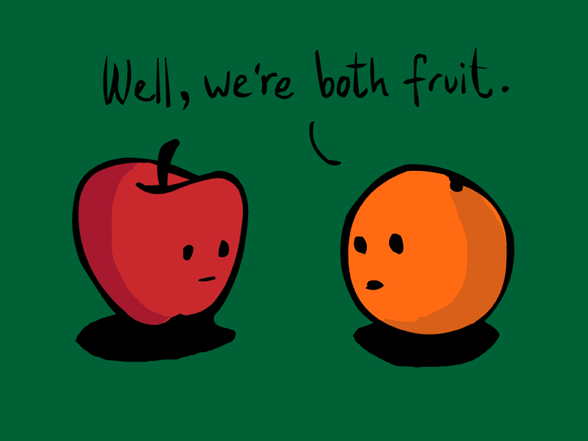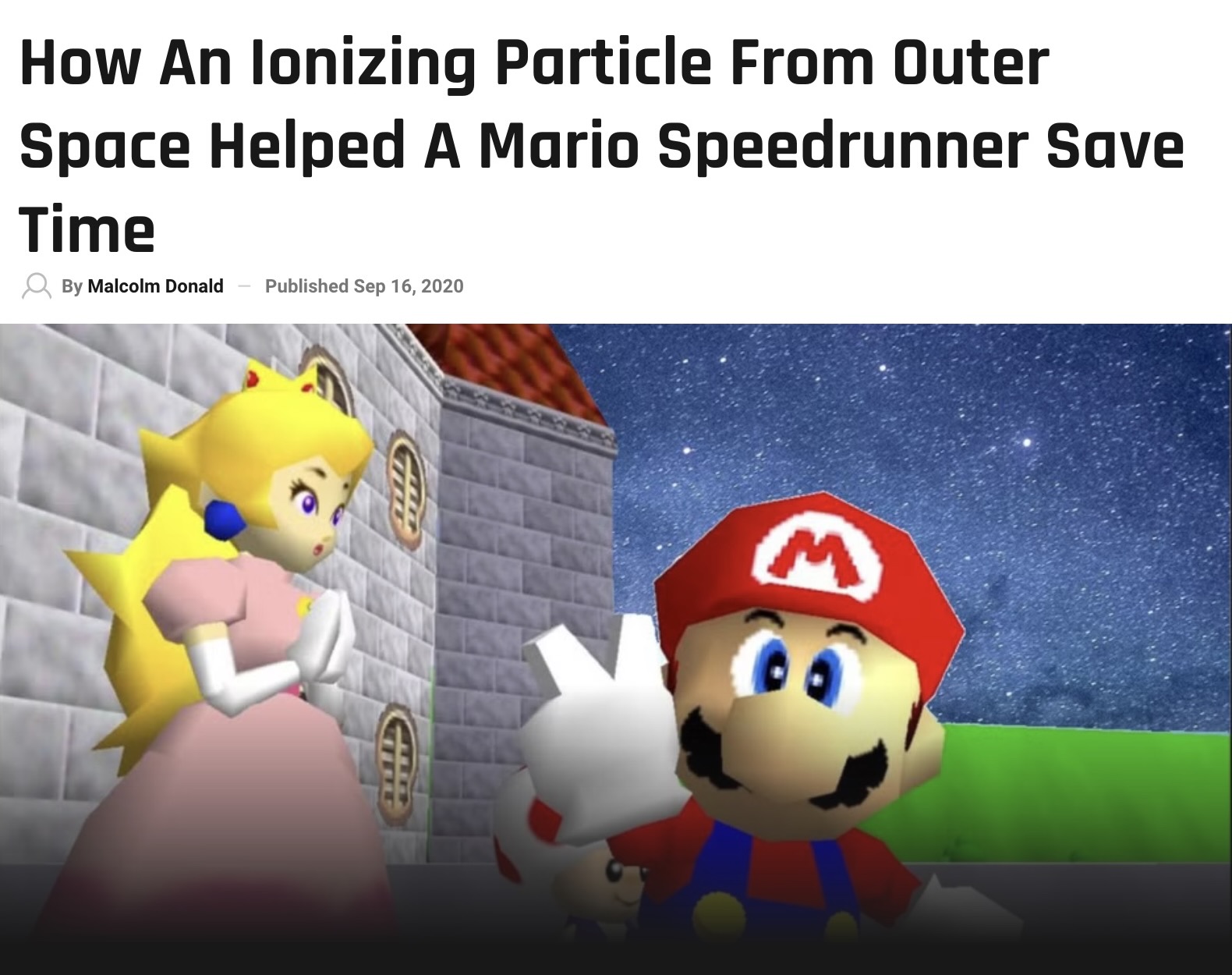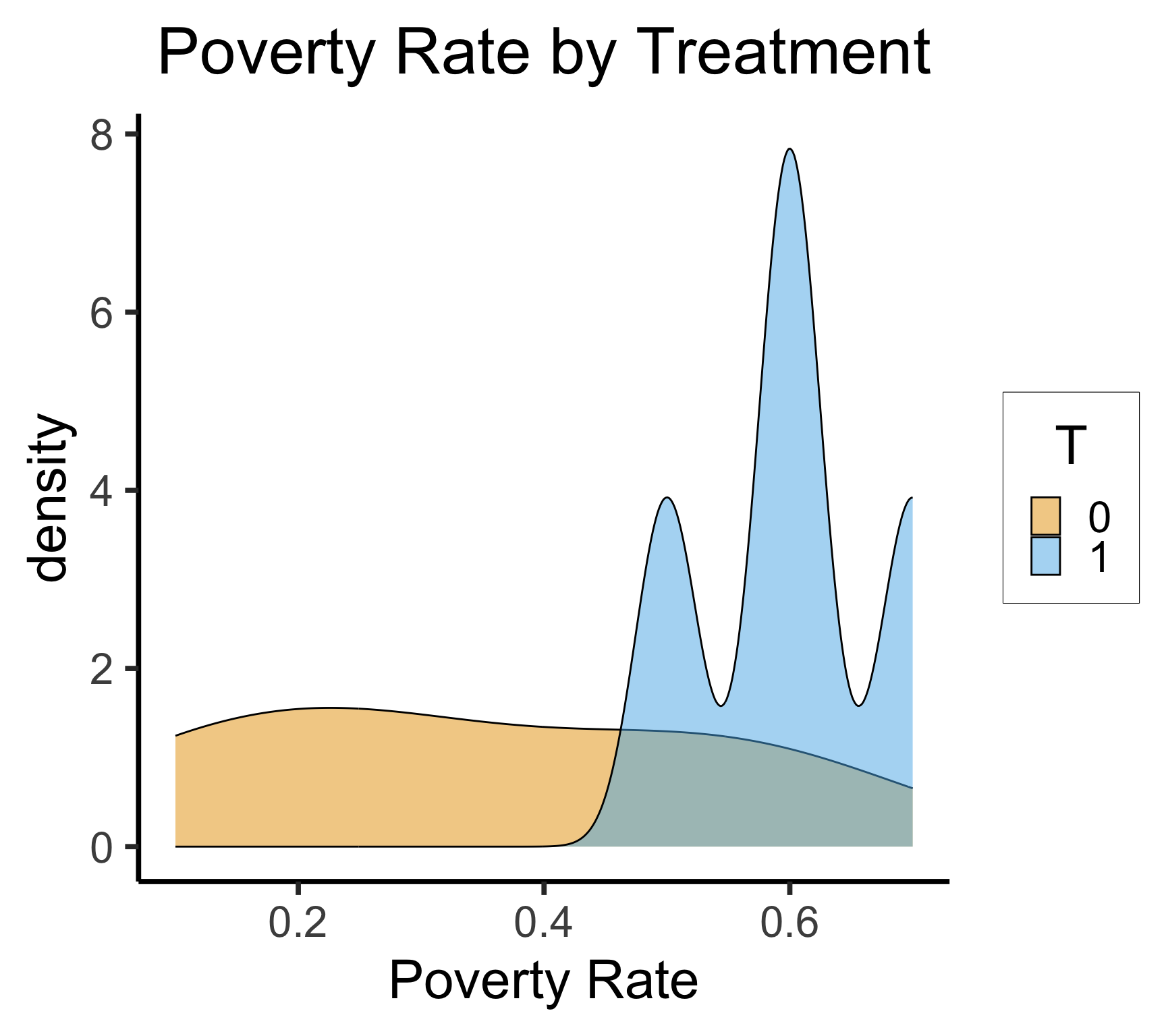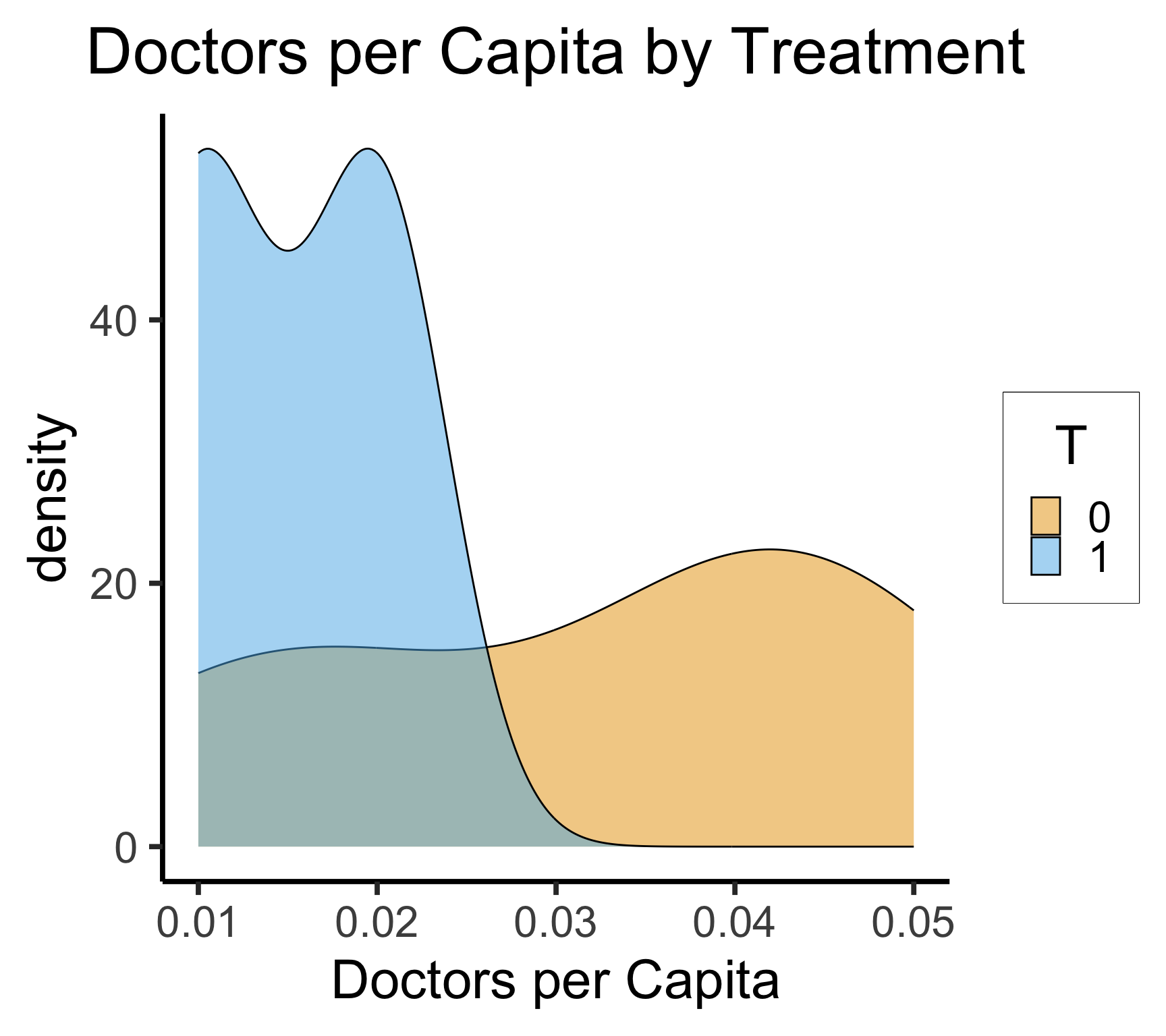Week 13: Machine Learning for Causal Inference
DSAN 5300: Statistical Learning
Spring 2025, Georgetown University
Monday, April 14, 2025
Schedule
Today’s Planned Schedule:
| Start | End | Topic | |
|---|---|---|---|
| Lecture | 6:30pm | 7:00pm | Fundamental Problem of Causal Inference → |
| 7:00pm | 7:20pm | Apples to Apples → | |
| 7:20pm | 8:00pm | How Can Machine Learning Help? → | |
| Break! | 8:00pm | 8:10pm | |
| 8:10pm | 9:00pm | Causal Forests → |
\[ \DeclareMathOperator*{\argmax}{argmax} \DeclareMathOperator*{\argmin}{argmin} \newcommand{\bigexp}[1]{\exp\mkern-4mu\left[ #1 \right]} \newcommand{\bigexpect}[1]{\mathbb{E}\mkern-4mu \left[ #1 \right]} \newcommand{\definedas}{\overset{\small\text{def}}{=}} \newcommand{\definedalign}{\overset{\phantom{\text{defn}}}{=}} \newcommand{\eqeventual}{\overset{\text{eventually}}{=}} \newcommand{\Err}{\text{Err}} \newcommand{\expect}[1]{\mathbb{E}[#1]} \newcommand{\expectsq}[1]{\mathbb{E}^2[#1]} \newcommand{\fw}[1]{\texttt{#1}} \newcommand{\given}{\mid} \newcommand{\green}[1]{\color{green}{#1}} \newcommand{\heads}{\outcome{heads}} \newcommand{\iid}{\overset{\text{\small{iid}}}{\sim}} \newcommand{\lik}{\mathcal{L}} \newcommand{\loglik}{\ell} \DeclareMathOperator*{\maximize}{maximize} \DeclareMathOperator*{\minimize}{minimize} \newcommand{\mle}{\textsf{ML}} \newcommand{\nimplies}{\;\not\!\!\!\!\implies} \newcommand{\orange}[1]{\color{orange}{#1}} \newcommand{\outcome}[1]{\textsf{#1}} \newcommand{\param}[1]{{\color{purple} #1}} \newcommand{\pgsamplespace}{\{\green{1},\green{2},\green{3},\purp{4},\purp{5},\purp{6}\}} \newcommand{\prob}[1]{P\left( #1 \right)} \newcommand{\purp}[1]{\color{purple}{#1}} \newcommand{\sign}{\text{Sign}} \newcommand{\spacecap}{\; \cap \;} \newcommand{\spacewedge}{\; \wedge \;} \newcommand{\tails}{\outcome{tails}} \newcommand{\Var}[1]{\text{Var}[#1]} \newcommand{\bigVar}[1]{\text{Var}\mkern-4mu \left[ #1 \right]} \]
Roadmap
What makes causation different from correlation?
- Why can’t we use, e.g., Regression to infer causal effects? \(\uparrow X\) by 1 unit
causes\(\uparrow Y\) by \(\beta\) units? - \(\leadsto\) Fundamental Problem of Causal Inference
Key to resolving Fundamental Problem: Match similar observations
- Apples to apples: If \(j\) receives drug while \(i\) doesn’t, and they’re \(s_{ij}\%\) similar otherwise (age, height)…
- Higher \(s_{ij}\) \(\implies\) more confidence in attributing difference in outcomes \(\boxed{\Delta y = y_j - y_i}\) to drug!
- \(\leadsto\) Propensity Score Matching (\(\approx\) Logistic Regression)
How can ML help us infer counterfactual effects?
- Patient \(i\) didn’t receive treatment, reported VAS pain level \(y^0_i = 80\)…
- If \(i\) had received treatment, what would their pain level \(y_i^1\) be?
- \(\leadsto\) Causal Forests, to estimate \(\boxed{\Delta y_i = y^1_i - y^0_i}\)
The Fundamental Problem of Causal Inference
The Fundamental Problem of Causal Inference
The only workable definition of “\(X\) causes \(Y\)”:
Defining Causality (Hume 1739)
\(X\) causes \(Y\) if and only if:
- \(X\) temporally precedes \(Y\) and
- In two worlds \(W_0\) and \(W_1\) where everything is exactly the same…
- …except that \(\boxed{X = 0 \text{ in } W_0}\) and \(\boxed{X = 1 \text{ in } W_1}\),
- \(\boxed{Y = 0 \text{ in } W_0}\) and \(\boxed{Y = 1 \text{ in } W_1}\).
- The problem? We live in one world, not two simultaneous worlds 😭
Can’t We Just Use Temporal Precedence?
- Can’t we just pretend that \(W_0\) is our world at time \(t\) and \(W_1\) is our world at time \(t + 1\)?
- Did throwing the eraser at Sam at time \(t\) cause him to be upset at time \(t + 1\)?
- No, because at time \(t\), simultaneous with my eraser-throwing, a cockroach scuttled across his foot, the true cause of him being upset at time \(t + 1\)
- Without knowing that the worlds are identical except for the posited cause-event, we can’t exclude the possibility of some other cause-event
Extreme Example: Super Mario 64 Speedrunning
Seemingly-reasonable assumption: Button-pushes cause outcomes in games…
During the race, an ionizing particle from outer space collided with DOTA_Teabag’s N64, flipping the eighth bit of Mario’s first height byte. Specifically, it flipped the byte from 11000101 to 11000100, from “C5” to “C4”. This resulted in a height change from C5837800 to C4837800, which by complete chance, happened to be the exact amount needed to warp Mario up to the higher floor at that exact moment.
This was tested by pannenkoek12 - the same person who put up the bounty - using a script that manually flipped that particular bit at the right time, confirming the suspicion of a bit flip.
What About A-B Testing?
- Gets us significantly closer, but methods for recovering causal effect require a condition called SUTVA
- Stable Unit Treatment Value Assumption: Treatment applied to \(i\) does not affect outcome for another person \(j\)
- If we A-B test an app redesign (A = old design, B = new design), and outcome = length of time spent on app…
- Person \(i\) seeing design A may like the new design, causing them to spend more time on the app
- Person \(i\) may then message person \(j\) “Check out [app], they redesigned everything!”, causing \(j\) to spend more time on app regardless of treatment (network spillover ❌)
What Is To Be Done?

Matching Estimators

Case Study: Military Inequality \(\leadsto\) Military Success
- Lyall (2020): “Treating certain ethnic groups as second-class citizens […] leads victimized soldiers to subvert military authorities once war begins. The higher an army’s inequality, the greater its rates of desertion, side-switching, and casualties”
Matching constructs pairs of belligerents that are similar across a wide range of traits thought to dictate battlefield performance but that vary in levels of prewar inequality. The more similar the belligerents, the better our estimate of inequality’s effects, as all other traits are shared and thus cannot explain observed differences in performance, helping assess how battlefield performance would have improved (declined) if the belligerent had a lower (higher) level of prewar inequality.
Since [non-matched] cases are dropped […] selected cases are more representative of average belligerents/wars than outliers with few or no matches, [providing] surer ground for testing generalizability of the book’s claims than focusing solely on canonical but unrepresentative usual suspects (Germany, the United States, Israel)
Does Inequality Cause Poor Military Performance?
Covariates |
Sultanate of Morocco Spanish-Moroccan War, 1859-60 |
Khanate of Kokand War with Russia, 1864-65 |
|---|---|---|
| \(X\): Military Inequality | Low (0.01) | Extreme (0.70) |
| \(\mathbf{Z}\): Matched Covariates: | ||
| Initial relative power | 66% | 66% |
| Total fielded force | 55,000 | 50,000 |
| Regime type | Absolutist Monarchy (−6) | Absolute Monarchy (−7) |
| Distance from capital | 208km | 265km |
| Standing army | Yes | Yes |
| Composite military | Yes | Yes |
| Initiator | No | No |
| Joiner | No | No |
| Democratic opponent | No | No |
| Great Power | No | No |
| Civil war | No | No |
| Combined arms | Yes | Yes |
| Doctrine | Offensive | Offensive |
| Superior weapons | No | No |
| Fortifications | Yes | Yes |
| Foreign advisors | Yes | Yes |
| Terrain | Semiarid coastal plain | Semiarid grassland plain |
| Topography | Rugged | Rugged |
| War duration | 126 days | 378 days |
| Recent war history w/opp | Yes | Yes |
| Facing colonizer | Yes | Yes |
| Identity dimension | Sunni Islam/Christian | Sunni Islam/Christian |
| New leader | Yes | Yes |
| Population | 8–8.5 million | 5–6 million |
| Ethnoling fractionalization (ELF) | High | High |
| Civ-mil relations | Ruler as commander | Ruler as commander |
| \(Y\): Battlefield Performance: | ||
| Loss-exchange ratio | 0.43 | 0.02 |
| Mass desertion | No | Yes |
| Mass defection | No | No |
| Fratricidal violence | No | Yes |
…Glorified Logistic Regression!
- Similarity score via Logistic Regression! Let’s look at a program that built health clinics in several villages: did health clinics cause lower infant mortality?
From “Controlling For” to “How Well Are We Controlling For?”
- By introducing covariates, we can see the selection bias at play…
Code
| village_id | T | inf_mortality | poverty_rate | docs_per_capita |
|---|---|---|---|---|
| 1 | 1 | 10 | 0.5 | 0.01 |
| 2 | 1 | 15 | 0.6 | 0.02 |
| 3 | 1 | 22 | 0.7 | 0.01 |
| 4 | 1 | 19 | 0.6 | 0.02 |
| 5 | 0 | 25 | 0.6 | 0.01 |
| 6 | 0 | 19 | 0.5 | 0.02 |
| 7 | 0 | 4 | 0.1 | 0.04 |
| 8 | 0 | 8 | 0.3 | 0.05 |
| 9 | 0 | 6 | 0.2 | 0.04 |
Selection Bias
- \(\leadsto\) We’re not comparing apples to apples! (“Well, we’re both villages”)
Logistic Regression of Treatment
Code
Call:
glm(formula = T ~ poverty_rate + docs_per_capita, family = "binomial",
data = village_df)
Coefficients:
Estimate Std. Error z value Pr(>|z|)
(Intercept) -7.498 8.992 -0.834 0.404
poverty_rate 14.500 13.651 1.062 0.288
docs_per_capita -8.880 143.595 -0.062 0.951
(Dispersion parameter for binomial family taken to be 1)
Null deviance: 12.3653 on 8 degrees of freedom
Residual deviance: 6.9987 on 6 degrees of freedom
AIC: 12.999
Number of Fisher Scoring iterations: 6- We now have a model of selection bias! \(\leadsto\) match observations with similar \(\Pr(T)\)
Propensity Score = Logistic Regression Estimate
| village_id | T | inf_mortality | poverty_rate | docs_per_capita | ps |
|---|---|---|---|---|---|
| 1 | 1 | 10 | 0.5 | 0.01 | 0.4165712 |
| 2 | 1 | 15 | 0.6 | 0.02 | 0.7358171 |
| 3 | 1 | 22 | 0.7 | 0.01 | 0.9284516 |
| 4 | 1 | 19 | 0.6 | 0.02 | 0.7358171 |
| 5 | 0 | 25 | 0.6 | 0.01 | 0.7527140 |
| 6 | 0 | 19 | 0.5 | 0.02 | 0.3951619 |
| 7 | 0 | 4 | 0.1 | 0.04 | 0.0016534 |
| 8 | 0 | 8 | 0.3 | 0.05 | 0.0268029 |
| 9 | 0 | 6 | 0.2 | 0.04 | 0.0070107 |
Propensity Score Matching = Distance Metric!
Code
Current village: T = 1, ps = 0.416571242858422Code
| village_id | T | poverty_rate | docs_per_capita | ps | ps_dist |
|---|---|---|---|---|---|
| 5 | 0 | 0.6 | 0.01 | 0.7527140 | 0.3361428 |
| 6 | 0 | 0.5 | 0.02 | 0.3951619 | 0.0214093 |
| 7 | 0 | 0.1 | 0.04 | 0.0016534 | 0.4149179 |
| 8 | 0 | 0.3 | 0.05 | 0.0268029 | 0.3897683 |
| 9 | 0 | 0.2 | 0.04 | 0.0070107 | 0.4095605 |
Now in a For Loop…
Code
for (i in 1:9) {
cur_T <- village_df[i,"T"] |> pull()
cur_ps <- village_df[i,"ps"] |> pull()
# writeLines(paste0("Current village: T = ",cur_T,", ps = ",cur_ps))
other_df <- village_df |> filter(T != cur_T) |>
mutate(
ps_dist = abs(ps - cur_ps)
)
match_id <- names(which.min(other_df$ps_dist))
village_df[i,"match"] <- as.numeric(match_id)
}
village_df |> select(-inf_mortality)| village_id | T | poverty_rate | docs_per_capita | ps | match |
|---|---|---|---|---|---|
| 1 | 1 | 0.5 | 0.01 | 0.4165712 | 6 |
| 2 | 1 | 0.6 | 0.02 | 0.7358171 | 5 |
| 3 | 1 | 0.7 | 0.01 | 0.9284516 | 5 |
| 4 | 1 | 0.6 | 0.02 | 0.7358171 | 5 |
| 5 | 0 | 0.6 | 0.01 | 0.7527140 | 2 |
| 6 | 0 | 0.5 | 0.02 | 0.3951619 | 1 |
| 7 | 0 | 0.1 | 0.04 | 0.0016534 | 1 |
| 8 | 0 | 0.3 | 0.05 | 0.0268029 | 1 |
| 9 | 0 | 0.2 | 0.04 | 0.0070107 | 1 |
And Now We Compare Apples to Apples…
Code
| village_id | T.x | inf_mortality.x | poverty_rate.x | docs_per_capita.x | ps.x | match | T.y | inf_mortality.y | poverty_rate.y | docs_per_capita.y | ps.y | match.y |
|---|---|---|---|---|---|---|---|---|---|---|---|---|
| 1 | 1 | 10 | 0.5 | 0.01 | 0.4165712 | 6 | 0 | 19 | 0.5 | 0.02 | 0.3951619 | 1 |
| 2 | 1 | 15 | 0.6 | 0.02 | 0.7358171 | 5 | 0 | 25 | 0.6 | 0.01 | 0.7527140 | 2 |
| 3 | 1 | 22 | 0.7 | 0.01 | 0.9284516 | 5 | 0 | 25 | 0.6 | 0.01 | 0.7527140 | 2 |
| 4 | 1 | 19 | 0.6 | 0.02 | 0.7358171 | 5 | 0 | 25 | 0.6 | 0.01 | 0.7527140 | 2 |
Code
| mean_tr | mean_control |
|---|---|
| 16.5 | 23.5 |
- \(\leadsto\) Treatment effect \(\approx\) -7 🥳
References
DSAN 5300-01 Week 13: Machine Learning for Causal Inference


